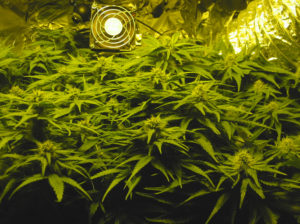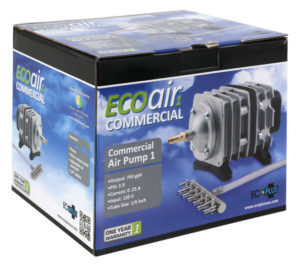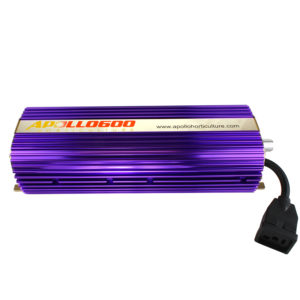21 Mar Ask The BudBot: Basic Grow Equipment For Beginners
Once you have decided to set up a grow you have a few things to consider before selecting your equipment. Lets consider the question of scale first…
Grow Big or Grow Small
Considering that you are a beginner, and that this article isn’t about commercial growing, let’s assume the large end of the scale being a walk in closet sized space. Plenty of room in there if you have the space to dedicate – you could grow several plants, have a few lights, produce several pounds per harvest every 3 or 4 months. A system in this room may involve a light mover, or a system of shared buckets.
But as was noted, you are a beginner, perhaps starting out in that room with a single light and building up is wise before getting in over your head – and if you are like me, there isn’t a large closet to spare then a small 4’x2′ or 3’x3′ cubby of a closet will do just fine. You can also set up a grow tent in the corner of a room, should a closet not be at hand – just be sure that you can keep it secure in a room that won’t see strangers. You will pull a pound or more out of that closet every 3 or 4 months – more than enough to handle most anyone’s need.
Of course there are those that hope to grow in even smaller spaces – inside a computer case or small filing cabinet – a stealth grow. You won’t be producing much weight – a quarter pound perhaps in the “larger” spaces – but at least the costs are low.
Let’s Go Shopping
If you just want to play around and don’t have the space, you are in the micro grow realm – you will need the same equipment as a larger grow, and it will operate in the same manner, but everything is smaller and lower power. Small computer fans take the place of large vortex fans, fish tank pumps replace pond pumps, tupperware replaces storage tubs. When it comes to the “best” equipment in this arena for a beginner it is best to simply stay as low cost as possible, but rather than cover this type of grow here, I will save it for a future post, where we will discuss taking clones and keeping moms – the same equipment is used there.
So we come back to our closet or grow tent – a contained space we will turn into a healthy habitat for a plant. If the closet has nice white walls you are ready to go – otherwise you can cover them with mylar or foil (with foil, dull side should face the plant). We want to make the most of the light we have in there, and white walls or reflective material will send back bunches of light that would have been lost. At the same time that we are considering the color of the walls we need to consider how “light tight” the room is. We will want to use insulation, curtains, sheet rubber, foil, tape, caulk and whatever you can get your hands on to make sure that when the door is shut it is completely dark in there.
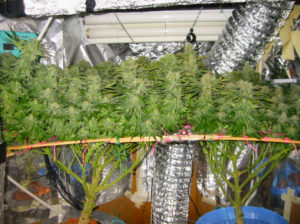
The last few items to pickup at the home center: grab any extension cords or power strips you may need – make sure they are heavy duty and can take high loads and are as short as possible.
Now for the meat of the matter – getting the list together for the grow store. So far we may have some mylar on the list – let’s add a few basic supplies before we go back to the grow closet. We will want some Rockwool cubes – small cubes an inch or two square that are a staple for starting seeds and clones. In addition to rockwool we will want Hydroton rocks, or Coconut Coir – preferably both – for growing larger plants and keeping moms. With these three grow media at your disposal you will never want for more.
Grow media is what plants grow in, but they don’t contain any nutrition for the plant. Instead they act like sponges holding nutrients and water for the plant to use – they are a delivery method. What makes them special is that they not only deliver water and nutrients, but are specially designed to also hold the correct amount of air for a healthy plant.
Comfort Food For Your Plants
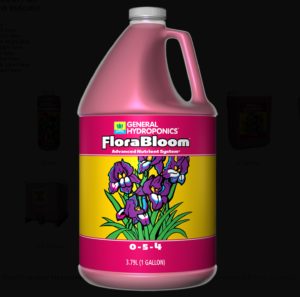
We are nearly there for covering our plants feeding. We have our media, our food, a tub. We will want a 6 inch net bucket which we will fill with grow media and insert into a hole we will cut into the lid of our tub, suspending our plant above our 10 gallons of water and food. Also needed is an air pump and some air stones, to keep our water frothing with oxygen for our plants. Net buckets are simple enough, just a plastic basket that lets the plants roots grow through – can’t go wrong choosing whatever the local grow store has on the shelf – but an air pump is not to be trifled with and you will want to select only commercial pond pumps for this use. These pumps deliver many gallons of air per minute and are the key to fast healthy growth. No need to pull the larger model off the shelf, the smallest of the commercial pond pumps will do… Don’t forget some air hose and air stones (big four inch cylinders are best).
Lights, Camera, Action!
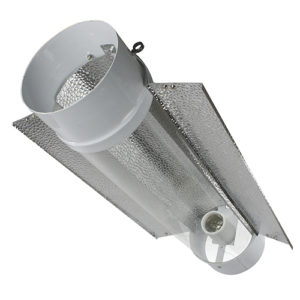
That light is going to get hot, and we do have 25 feet of air duct, so let’s address the last big issue – air handling. We want a fan that can keep that light cool – and that is no small feat, as what you have there is a small box with a giant heating element in it. So the fan we need is not cheap – no squirrel cage fan will do, no makeshift solution – we need a 6 inch vortex fan that can pump huge volumes of air through our closet (and our light). A bit of that duct tape we used to seal out light will come in handy attaching the duct to the light housing – may want to add an extra roll of duct tape to the list as well. You can never have too much duct tape!
Duct Duct Goose
A fan blowing out the heat is also going to blow a lot of stinky stank all over the neighborhood. That just won’t do. A carbon filter is a must have to keep the smell of fresh bud inside your closet where it belongs. A six inch carbon “can” filter can be used in a variety of ways, placed inside or outside of the closet, at the air intake or exhaust – easily connected to your 6 inch air duct and forgotten about for the next year, after which you replace the carbon and forget about them for another year. I like to place mine inside my closet at the very top, where it can suck in all the hot air that rises there – it connects to some 6″ duct which connect to one side of my light. More duct runs from the other end of my light to my vortex fan, which sucks air through the filter, through the light, through itself, and then exhausts out the closet hot and smell free through a last short bit of 6″ duct. At the bottom of my closet I have an air intake, which is also sized 6″ in diameter. You want to have input and output sizes matching for good airflow – and you can use some duct work with a few bends to let air in your intake without allowing light in.
Almost There
Our list is pretty complete at this point, let’s just toss on a few odds and ends – some “adjustable light hangers” will help us to raise and lower the light as we grow, a small beaker for measuring food solution (250ml marked in 10ml increments is nice to have – we often measure out 80ml of this or 160ml of that), and a plastic dropper marked in milliliters will come in handy for doling out PH solution.
A nice option is a good continuous PH/PPM meter, which will let you keep an eye on things, and at a lower price point there are some simple dip meters for quick testing as well – but these are optional and all you really need are some ph test strips or drops.
Safety First
So is that it – well, yes and no – that is all you need to run the grow but I wouldn’t turn the power on and turn my back on it like that. The one component it needs is safety, and we will use two components to add it in. First, we need a temperature cutt-off connected to the light. Set at 90 degrees, it will turn off the light should the temperature climb, preventing injury to your plant and more importantly, preventing fire should your fan fail. This is not to be ignored! Remember, you have a heating element in a closed box without that fan roaring away… And that brings us to our last element, something that has been around a few years now and that every grow should have to consider it self safe – a grow closet fire extinguisher. They sell them everywhere that they sell grow systems, and will automatically coat your closet in sticky fire preventing goodness should temperatures climb above 150. Get it? Got it? Good!
Until next time. If you have any questions – hit me up on Twitter @simleafapp
You can download simLeaf here and start experimenting before you start buying supplies: http://bit.ly/simLeaf
Happy Growing!



